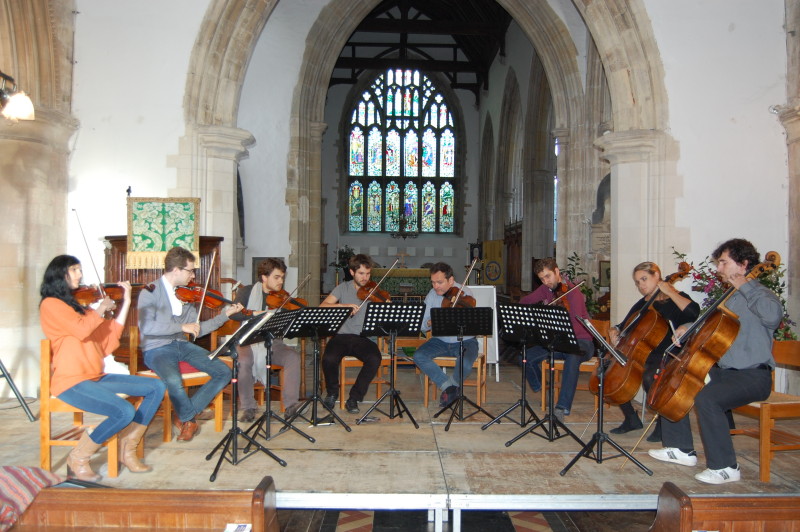There can be little doubt that the Belcea are one of the world’s leading string quartets, and the first half of the concluding classical concert of the 44th Rye Arts Festival in St Mary’s Church on September 24 showed why. At the start of their twentieth year, technical difficulties seem unknown to them and their performance of Mozart’s ‘Dissonant’ quartet K.465 revealed this familiar work in all its power and mystery.
The virtually key-less beginning pre-dates the opening of Wagner’s Tristan and Isolde by many decades and introduces a piece where beauty and delight mask a world of tragedy and even anguish, all caught completely by the Belcea in this masterly interpretation. The Mozart’s tragic elements link it to the second work in the concert, Bartok’s First Quartet, which it is hard to believe was written over a hundred years ago, in 1909.
Fiendishly difficult to play and to shape, the programme notes draw attention to the music’s characteristics with words such as ‘anguish’, ‘sadness’, ‘funeral’, ‘anger’, ‘ominous’ and ‘fist-shaking’. Mark Sitola tells us that Kodaly called the whole quartet Bartok’s ‘return to life’ but describes even its vigorous final section as ‘scolding’ and ‘grotesque’. The Belcea’s performance was brilliantly convincing: we all needed much longer than the interval to recover!
We shouldn’t have been concerned; the second half saw the Piatti Quartet, whom we all recall vividly from a year ago, join the Belcea to restore a joyous view of things with a wonderfully uplifting Mendelssohn Octet, in which both ensembles combined to raise our spirits to the heights. Mendelssohn said the Octet should be played ‘in symphonic orchestral style’ and the Belcea/Piatti combination did just that – no more need be said.
The Belcea have been working with the Piatti over the last year and the younger quartet could have no finer mentors. This was an unforgettable conclusion to the classical concerts in the 2015 Festival, all of which, plus the remarkably powerful Don Giovanni, have been made possible by the remarkable impresario skills of Peter Brice, to whom we are all immensely indebted.
Photo: Kenneth Bird



